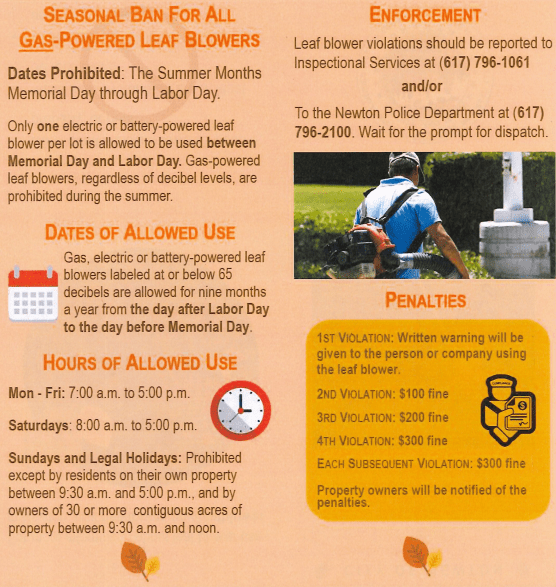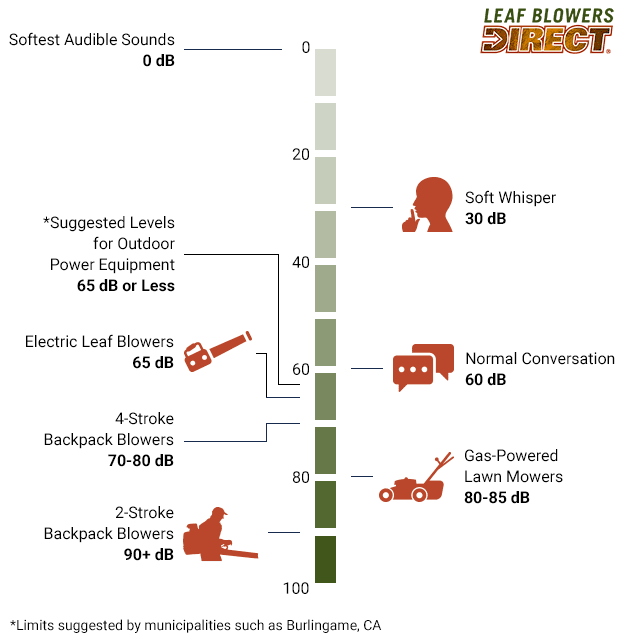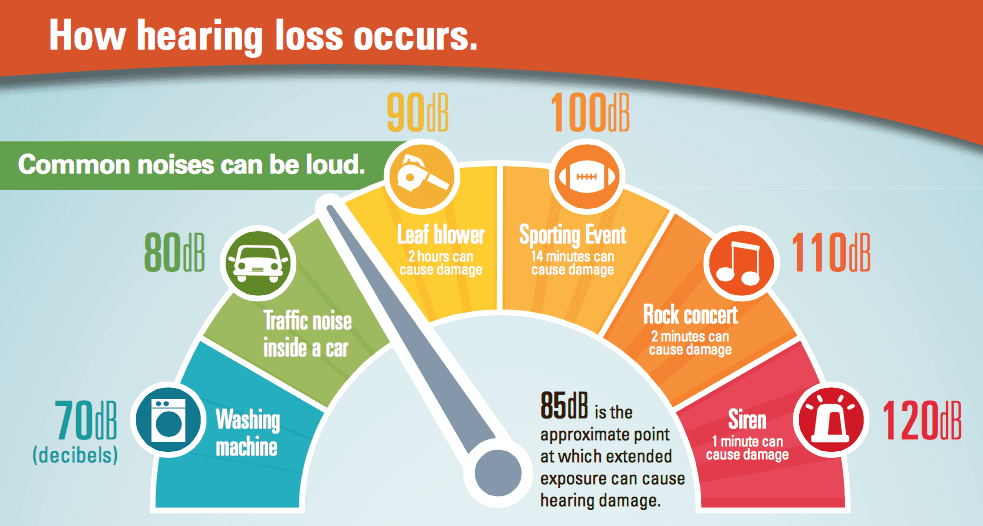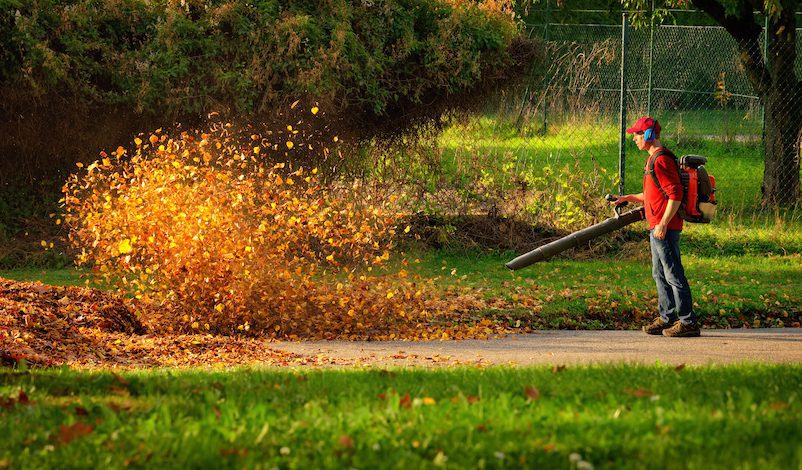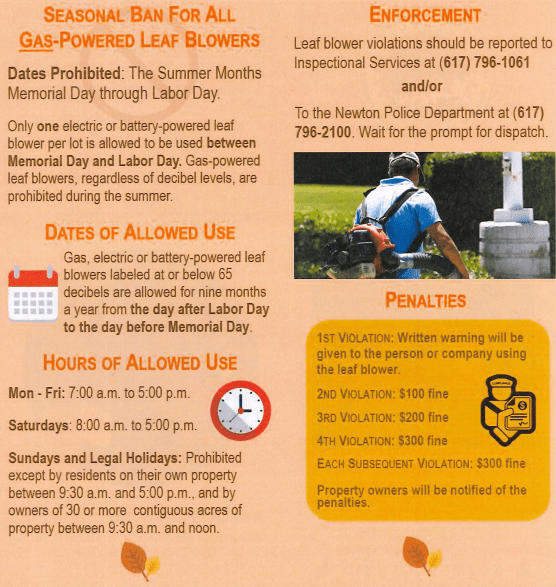Leaf blowers are a standard tool for clearing leaves and debris, but have you ever wondered how loud they can be?
In this article, we’ll explore the noise levels of leaf blowers and discuss the potential impact on both the users and the surrounding environment.
Whether you’re a homeowner considering purchasing a leaf blower or simply curious about the noise pollution they create, this article will provide valuable insights into these powerful machines’ decibel levels.
Leaf Blowers and Noise Pollution
Leaf blowers are commonly used tools for landscaping and yard maintenance. While they can efficiently remove leaves and debris, they are also a significant source of noise pollution.
In this article, we will explore the impact of leaf blower noise on health, the regulations regarding noise emission, and various strategies to reduce noise and mitigate its effects.
Sources of Noise Pollution
Noise pollution can come from various sources, including transportation, industries, construction, and recreational activities.
Leaf blowers fall into the category of recreational activities and are one of the leading sources of noise pollution in residential areas. Their high-pitched noise can disrupt neighborhoods’ peace and quiet, causing residents annoyance and disturbance.
Impact of Noise Pollution on Health
Excessive exposure to noise pollution, including that from leaf blowers, can have detrimental effects on both physical and mental health.
Prolonged exposure to high sound levels can lead to hearing damage and loss, especially for those who operate leaf blowers without proper hearing protection. The constant noise can also cause stress, annoyance, and sleep disturbances, affecting overall well-being.
Regulations on Noise Emission
To address the issue of noise pollution, many regions have implemented regulations on noise emission, including specific guidelines for leaf blowers.
These regulations typically limit the sound levels that leaf blowers can produce. By enforcing these regulations, authorities aim to reduce the disruptive effects of noise pollution on communities and protect the health of individuals.
Understanding Decibels (dB)
What are Decibels?
Decibels (dB) are the unit of measurement used to quantify sound intensity or loudness. They provide a way to compare the relative strength of different sounds. The decibel scale is logarithmic, meaning that every 10 dB increase represents a tenfold increase in sound intensity.
Scale of Decibels
To have a better understanding of what certain decibel levels mean, let’s take a look at the scale. A whisper typically measures around 30 dB, conversational speech ranges from 60 to 70 dB, and a normal conversation can reach approximately 80 dB. At around 120 dB, the pain threshold is reached, and any sound above this level can cause immediate discomfort or damage to the ears.
Typical Noise Levels for Reference
To put the noise generated by leaf blowers into perspective, let’s compare their sound levels to other familiar sounds:
- Conversation (60 dB): A typical conversation between two people.
- Rainfall (50-75 dB): The sound of rain falling can be soothing and relaxing to many.
- Vacuum Cleaner (70-80 dB): The noise produced by a typical household vacuum cleaner.
- Busy Street (70-85 dB): The sound levels are found on a bustling street with traffic and pedestrians.
- Hairdryer (85 dB): The noise emitted by a standard hairdryer.
- Lawn Mower (90 dB): The sound produced by a typical gas-powered lawn mower.
Measuring Leaf Blower Noise
Noise Level Instruments
To measure the noise levels of leaf blowers accurately, specialized instruments called sound level meters are used.
These instruments measure sound pressure levels in decibels (dB) and provide an objective measurement of the intensity of the noise emitted by leaf blowers.
A-Weighting
When measuring the noise levels of leaf blowers or any other sound sources, the concept of A-weighting is often employed. A-weighting adjusts the frequency response of the sound level meter to mimic the sensitivity of the human ear. This weighting allows for a more accurate representation of how noise is perceived by humans.
Sound Power vs. Sound Pressure
When discussing leaf blower noise, two essential concepts come into play: sound power and sound pressure. Sound power refers to the total acoustic power radiated by a source, while sound pressure represents the force exerted by sound waves on a surface. Sound pressure is what we typically measure when quantifying noise levels.
Decibel Rating of Leaf Blowers
Leaf blowers can have varying decibel ratings depending on their design, technology, and power source. Gas-powered leaf blowers tend to emit higher noise levels due to their combustion engines, usually ranging from 90 to 110 dB. Electric leaf blowers, on the other hand, are generally quieter, producing noise levels around 60 to 75 dB. Battery-powered leaf blowers fall somewhere in between, with noise levels ranging from 70 to 90 dB.
Factors Affecting Leaf Blower Noise
Engine Type and Size
The type and size of the engine play a significant role in determining the noise levels of leaf blowers. Gas-powered leaf blowers, which typically have larger and more powerful engines, tend to produce higher noise levels due to the internal combustion process. Electric and battery-powered leaf blowers, on the other hand, generate less noise as they rely on electric motors.
Air Velocity and Volume
The air velocity and volume produced by a leaf blower can also impact the noise levels. Higher air velocities and larger volumes of air movement tend to generate more noise. Manufacturers are continuously working on optimizing the design of leaf blowers to achieve a better balance between performance and noise reduction.
Muffler and Exhaust System
Like any internal combustion engine, leaf blowers feature mufflers and exhaust systems that help reduce noise levels. The design and effectiveness of these components can significantly affect the sound emitted by the leaf blower. Mufflers with advanced noise reduction technologies are often used to minimize noise pollution.
Blower Design and Technology
The overall design and technology used in leaf blowers can contribute to their noise levels. Some manufacturers employ innovative features such as noise-absorbing materials, vibration dampening systems, and aerodynamic shapes to reduce noise production. By utilizing these advancements, leaf blower manufacturers strive to create quieter and more efficient tools.
Specific Leaf Blower Models
Gas-Powered Leaf Blowers
Gas-powered leaf blowers are commonly used for commercial purposes, as they offer high power and mobility. However, they tend to produce higher noise levels compared to electric or battery-powered models. When selecting a gas-powered leaf blower, it is essential to consider noise ratings and opt for models with lower decibel levels.
Electric Leaf Blowers
Electric leaf blowers are popular among homeowners due to their convenience and quieter operation. These models are typically lightweight, require less maintenance, and emit lower noise levels compared to gas-powered alternatives. Electric leaf blowers are a suitable choice for those seeking a quieter option for residential use.
Battery-Powered Leaf Blowers
Battery-powered leaf blowers provide a balance between mobility and noise reduction. While they offer the convenience of wireless operation and produce less noise compared to gas-powered models, their power and run-time may be more limited. However, advancements in battery technology have led to the development of more powerful and longer-lasting battery-powered leaf blowers.
Noise Comparison with Other Common Sounds
Conversation (60 dB)
Engaging in a conversation with someone typically produces sound levels around 60 dB, making it a reasonable benchmark for determining the relative loudness of leaf blowers. A leaf blower operating at noise levels exceeding this can be significantly disruptive to nearby conversations or activities.
Rainfall (50-75 dB)
The sound of rainfall falls within the range of 50 to 75 dB, depending on its intensity. Comparatively, a leaf blower often generates higher noise levels than rainfall, which can be distressing to those seeking tranquility in their environment.
Vacuum Cleaner (70-80 dB)
The noise levels produced by a vacuum cleaner, which range from 70 to 80 dB, are comparable to those of a leaf blower. This provides a reference point, as most people are familiar with the sound generated by household cleaning devices.
Busy Street (70-85 dB)
A bustling street with traffic and pedestrians contributes to sound levels ranging from 70 to 85 dB. Leaf blowers, especially gas-powered ones, can produce noise levels similar to those encountered on a busy street, highlighting the potential disruptive impact on the surrounding environment.
Hairdryer (85 dB)
The noise emitted by a standard hairdryer measures around 85 dB, similar to the noise levels generated by some leaf blowers. This comparison helps illustrate the need for considering noise reduction strategies when operating leaf blowers in residential areas.
Lawn Mower (90 dB)
The sound produced by a typical gas-powered lawn mower falls within the range of 90 dB. Leaf blowers, especially some gas-powered models, can generate similar noise levels, underscoring the importance of mitigating their impact through noise reduction measures.
Effects of Leaf Blower Noise
Hearing Damage and Loss
Prolonged exposure to high noise levels from leaf blowers can cause permanent hearing damage and loss. The loud noise emitted by leaf blowers can lead to irreversible damage to the delicate structures of the inner ear, resulting in hearing impairment or even deafness. It is crucial for both operators and bystanders to protect their hearing by wearing appropriate personal protective equipment (PPE), such as earmuffs or earplugs.
Stress, Annoyance, and Sleep Disturbance
Excessive noise from leaf blowers can cause stress, annoyance, and sleep disturbances. The constant noise can disrupt peaceful environments, making it difficult for individuals to relax or concentrate. Sleep disturbances caused by leaf blower noise can lead to fatigue, decreased productivity, and reduced overall well-being.
Negative Impact on Wildlife
Leaf blower noise can also have a negative impact on wildlife. Birds, for example, rely on their hearing to locate prey, communicate, and navigate their surroundings. The loud noise from leaf blowers can disrupt their natural behaviors and cause stress, potentially leading to decreased reproductive success or migration patterns.
Impact on Community and Environment
The disruptive impact of leaf blower noise extends beyond individuals’ health and well-being. Excessive noise in residential areas can strain community relationships and decrease the quality of life for residents. Additionally, noise pollution can disrupt the natural balance of ecosystems and affect the overall environmental health of an area.
Noise Reduction and Mitigation Strategies
Personal Protective Equipment (PPE)
Personal protective equipment, such as earmuffs or earplugs, can offer effective hearing protection for both leaf blower operators and bystanders. Wearing appropriate PPE can significantly reduce the risk of hearing damage or loss associated with exposure to high noise levels.
Use of Quieter Leaf Blower Models
Opting for leaf blowers that are specifically designed to reduce noise levels can make a significant difference. Electric and battery-powered models generally produce lower noise levels compared to gas-powered alternatives. When purchasing a leaf blower, it is important to consider the manufacturer’s noise rating and choose models with lower decibel levels.
Time and Operational Restrictions
Implementing time and operational restrictions on leaf blower use can help minimize the disruptive impact of noise pollution. Local municipalities may impose specific hours during which leaf blowers are prohibited or limit their use to designated areas. These restrictions aim to strike a balance between the need for landscape maintenance and the preservation of peaceful neighborhoods.
Proper Maintenance and Tuning
Regular maintenance and tuning of leaf blowers can help reduce noise emissions. Ensuring that engines are properly tuned, filters are clean, and mufflers are in optimal condition can contribute to quieter operation.
Additionally, addressing any mechanical issues promptly can prevent excessive noise production.
Community Involvement and Awareness
Education and Awareness Campaigns
Raising community awareness about the impact of leaf blower noise can encourage responsible use and promote a more harmonious neighborhood. Educational campaigns can provide information on the effects of noise pollution and offer guidance on proper leaf blower use and noise reduction strategies.
Working with Local Authorities
Collaborating with local authorities can help address leaf blower noise concerns effectively. Working together, community members and authorities can establish guidelines and regulations to mitigate noise pollution. This collaboration allows for a shared responsibility in maintaining a peaceful environment for all residents.
Sharing Best Practices
Sharing best practices within the community can contribute to a more considerate approach to leaf blower use. Encouraging responsible and mindful operation of leaf blowers, such as avoiding use during early morning or late evening hours, can help minimize the disturbance caused by noise pollution.
Conclusion
Leaf blowers are valuable tools for maintaining tidy landscapes, but their noise levels can pose significant challenges. Understanding the impact of leaf blower noise on health, wildlife, and the community is crucial for finding effective solutions. By implementing noise reduction strategies, including the use of quieter leaf blower models, time restrictions, and community involvement, we can strike a balance between maintaining beautiful landscapes and respecting the tranquility of residential areas. Let us work together to create quieter, more harmonious neighborhoods.

